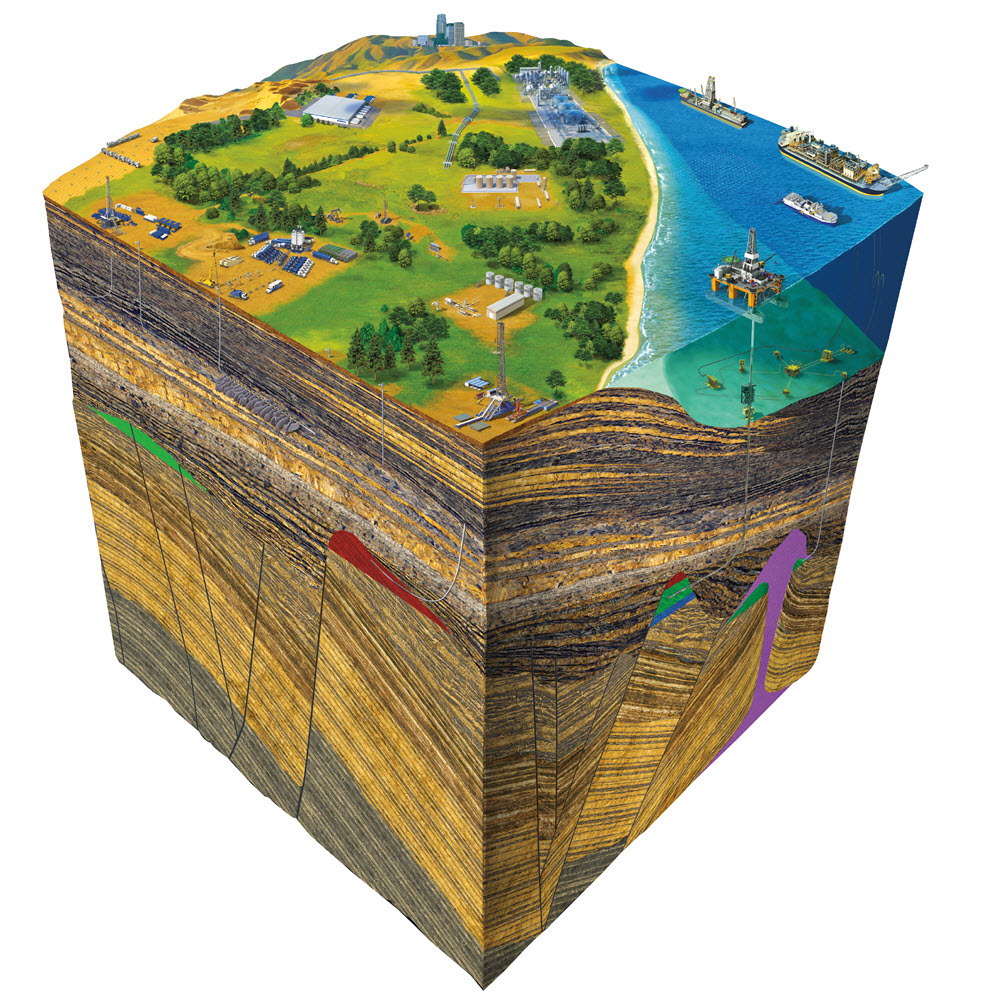This is the third in a limited series of executive insight pieces in which industry thought leaders will share experiences and views on the future of E&P. Specifically, the series looks at how the various domains in the E&P lifecycle can grow and develop by taking full advantage of digital technologies and data.
Subsurface Characterization as a Service
The information obtained from Subsurface Characterization underpins many decisions made at every stage of the E&P lifecycle. Considering it as a service to other domains and disciplines, or defining it as a symbiotic relationship, is not particularly radical.
It is however this subtle but crucial change in perspective that is needed if we want to unleash the potential of all the technologies available to us today and reshape the way we work as an industry.
How we acquire, process, store, access, share and update subsurface data and knowledge is key to all other advances we will make as an industry. From enabling a faster assessment of an opportunity’s potential and planning a smarter placement of wells, all the way through to executing more intelligent and efficient operations.
This shift in perspective is changing how we do things at Schlumberger. We are providing new tools to our product lines and developing new practices together to prove how this new way of working is possible across domain boundaries.
The result is a set of digital solutions, accessed via a single environment, that allows us and our customers to access subsurface information fast and on demand. It enables us to provide the best science and the best data at every step of the lifecycle. And it all starts with the question: where and how can Subsurface Characterization provide a better service to other domains?
Conquering complexities
Getting a handle on rock anisotropy and other complexities—to offer a more precise picture faster—is a challenge we can tackle with better computing, better data retention, and superior models. The areas of the workflow that can already handle heterogeneity—petroleum systems modeling, seismic processing, log interpretation—need to be linked up, along with everything else, to a shared truth, a shared model. It is the total sum of our best understanding of the asset that lives on through its entire lifecycle.

A shared model that works for all
A shared model does not mean that it has to be dominated by a specific domain logic. What we are looking to deliver is a shared model that works for all. We want every domain to be able to look at a shared truth through their own lens, enabling a more fruitful and seamless movement of valuable information from one domain to another. Nurturing the model and making it as accessible as possible, means no work is wasted and all insights are used.
Nurturing the model and making it as accessible as possible means no work is wasted, all insights are used.
Scaling seamlessly
Making the same model usable for all domains requires scalable resolutions—the ability to zoom in and out—to select the section you are interested in looking at, without losing context. For example, people working on petroleum systems can work in their native domain as usual and any information that they create will be provided to the driller in their domain at their resolution, seamlessly. We do not want any of the domains to have to do any conversion work on the data to make it understandable, usable or actionable for the next domain. It will be built into the system, where all stakeholders contribute and benefit at the same time.
Unshackling knowledge
The key to achieving all of this is to liberate Subsurface Characterization from its current confines. What geoscientists and petrophysicists can do, the service they can deliver, is still limited by interoperability issues, local desktop computing and time-consuming data hygiene.
If 50% of the working day is spent on data readiness, then that only leaves the other 50% to interact with the data from a domain perspective. Getting back that time means being able to engage deeply with the data. It is the difference between running multiple scenarios and running just one. The ability to try different things quickly means the result will be more robust and more confident.
We will be using all the technologies available today to free up time for value-added tasks. Cloud infrastructure is giving us scalable high-performance computing ability to hold a single, central model which enables more efficient handling of data, cutting out manual data transfers and cumbersome reformatting. Furthermore, new knowledge and operational data can be fed back into the model in real time, meaning that timelines of interpretative and operational parts of the value chain finally align. Never again will the model be a dozen wells behind the action.
One technology that will free up time for value added work is machine learning. In Subsurface Characterization, we are dealing with interpretative work, a higher-level skill that the machine can capture to learn from users as they work on different cases. Rather than acquiring interpretative skills itself, the machine will be able to identify commonalities between situations and hand the user a short cut in the form of a “this is what you did last time, in a similar situation”.
A shared model does not mean that it has to be dominated by one domain. What we are looking to deliver is a shared model that works for all.
Behind the scenes at Schlumberger: proving it’s possible
We know that all this can be done. We have access to our harshest critics and the toughest test bed in our industry: our own product lines’ domain experts. We have worked with them to make the vision I have sketched above a reality.
For example, over the last few years, more and more of our service product lines like Wireline or Drilling & Measurements have started to do their entire planning against the subsurface model and to deliver the interpretations of their measurements directly into the client’s subsurface model, allowing the customer to move faster to value added tasks. That is the shift in perspective I mentioned at the beginning—it permeates everything. We are now taking an approach that starts with a customer’s or end user's point of view, focusing on the subsurface.
Leveraging our comprehensive portfolio of product lines, we are taking input from all domains to build one Schlumberger solution. Since many of our product lines mirror individual E&P companies departments, this approach allows us to match our customers comprehensive needs, and to adopt it in the field - faster. We have at the same time started working closely with customers to co-create solutions quickly to address their specific challenges.
When knowledge comes full circle
So how do we define Subsurface Characterization as a service?
First, it is the ability to integrate all the measurements we have ever taken in the life of an asset, all the interpretative work that has ever been carried out on it to deliver an always current version of the (very best) truth.
Second, and just as important, it is to then present this real-time version of the truth at different scales, in different resolutions, with different properties—depending on the operational activity it is needed for. The result: every domain is enabled to make decisions on the basis of the best data, in a format accessible to them, and within a model that is fed and nurtured by all.
We will have closed the circle, where all knowledge is fully leveraged for the benefit of all. ■

